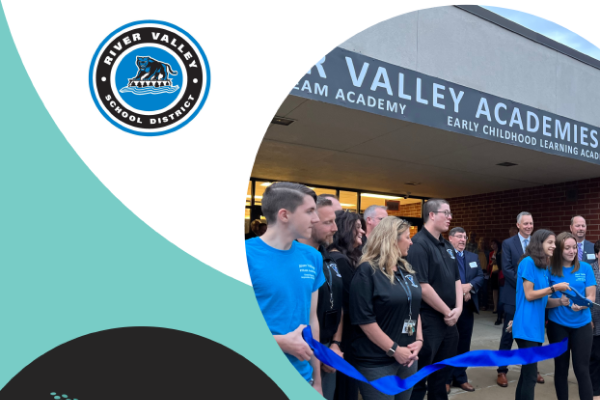Our Beneficial Linkages With Higher Education
May 01, 2023
EXECUTIVE PERSPECTIVE
When considering public education in our country, many people outside this profession focus on the high school graduation rate with school completion the primary goal for students. I believe we must shift the perspective to preparing students for life beyond high school and expand the concept of P-12, pre-kindergarten through grade 12 education, to P-20 and beyond.
A few states, notably Illinois and Michigan, look at the education system from preschool to learning for life. Our colleges and universities and the partnerships we create to support our students, staff and local communities are crucial to this holistic and systemic approach to public education.
Strategic Partnerships. School districts and postsecondary institutions can create impactful partnerships. Colleges and universities provide important connections and support to public schools — from preparing teachers and staff to become professional educators to offering early college credit opportunities and certifications to students to training community members on new skills.
Early College Credit. In my former district, High School District 214 in the suburbs of Chicago, we developed a robust early college credit program through Advanced Placement coursework, dual credit classes and co-enrollment programs. Our goal was never just to ensure every student graduated high school but to ensure they were prepared for college, career and life beyond school. Postsecondary completion, whether students earn a degree or a life-altering career certification leading to family-supporting wages in the middle class, ensures that once students exit our schoolhouse doors, they can engage in a career, not simply a job.
When our district began our dual credit efforts nearly 10 years ago, we had 705 total dual credit enrollments out of 12,000 students. That number grew steadily to 10,215 student enrollments through 76 unique dual credit courses by the time I left the district. My team developed relationships with eight postsecondary institutions, ranging from our local community college, Harper College; a private four-year university, Lewis University, for an aviation program; a four-year public university, Eastern Illinois University; to a four-year public university, Arizona State University.
We leveraged technology to partner with colleges and universities to meet the unique needs of our students and expand access and opportunity to them based on their career passions and interests. I encourage colleagues to not be geographically limited when considering postsecondary partners. Arizona State University and Eastern Illinois were phenomenal partners, though neither is close to the Chicago suburbs.
Staff Preparation, Recruitment and Professional Development. Colleges and universities prepare the next generation of our education workforce and provide current educators and staff members with professional development and continuing education. We must continue “grow your own programs” as the only way to address the critical teacher shortage. In District 214, to encourage students to enter the profession, we developed the Educator Prep program, giving high school students opportunities to get classroom teaching experience, earn early college credit and secure a more affordable option for college.
As we expand the pipeline to the superintendency, we should develop our district leadership and encourage staff to become principals and administrators. I encourage you to review several articles in AASA’s Thought Leader Central, including “School District and University Leadership Development Collaborations: How Do Three Partnerships Line Up With Best Practices?” by Zollie Stevenson Jr. and Pamela R. Shetley. The authors explore three successful models of district-university collaboratives.
By working with our partners in higher education, we make the path to public school and district leadership accessible, affordable and attainable.
Summer Renewal. As we begin to wrap up 2022-23, take some time to reflect on your successes and opportunities for growth from the past school year. Summer often is a time of renewal and reflection for school leaders. AASA provides multiple professional learning options during the summer, including our national summit on Learning 2025. In addition, our theme of Live Well, Lead Well from this past year is a great reminder that we must live well by creating the time to take care of ourselves to show up at work and in life in the best possible way.
With summer construction, last-minute staff hires, summer school and preparations for the new school year, it can be challenging to unplug and recharge. Still, I encourage you to take care of yourself and find an opportunity to connect with your colleagues in AASA. We have one of the most unique roles in the country and are the only ones who know what it is like. Please make time to reach out and reconnect with other superintendents.
Legislative Advocacy Conference. Finally, as you ponder your summer plans, consider joining your colleagues at our annual Legislative Advocacy Conference in Washington, D.C., July 11-13. AASA and ASBO International partner to provide this opportunity for our members to hear from education policy experts and agency staff and is an excellent chance to meet with your elected officials to discuss our federal policy agenda. They need to hear from their local education leaders, and it is an ideal time to collaborate with them on Capitol Hill during our annual conference. Be well!
David Schuler is AASA’s executive director. Twitter: @AASA_ED
Author
Advertisement
Advertisement
Advertisement
Advertisement



